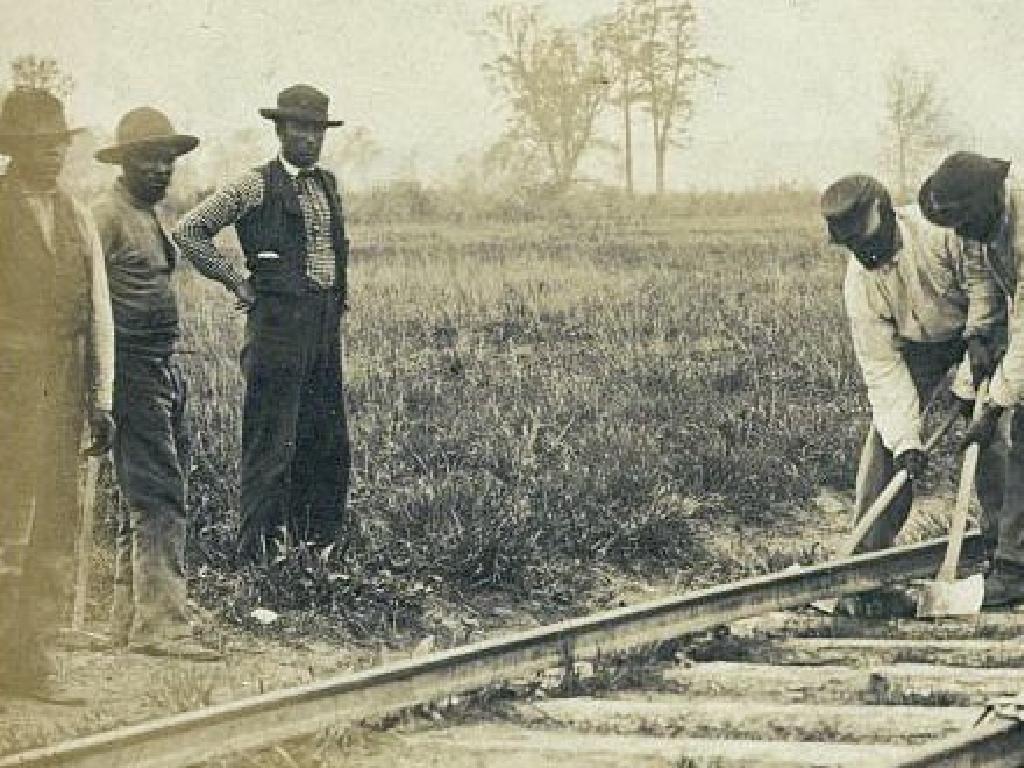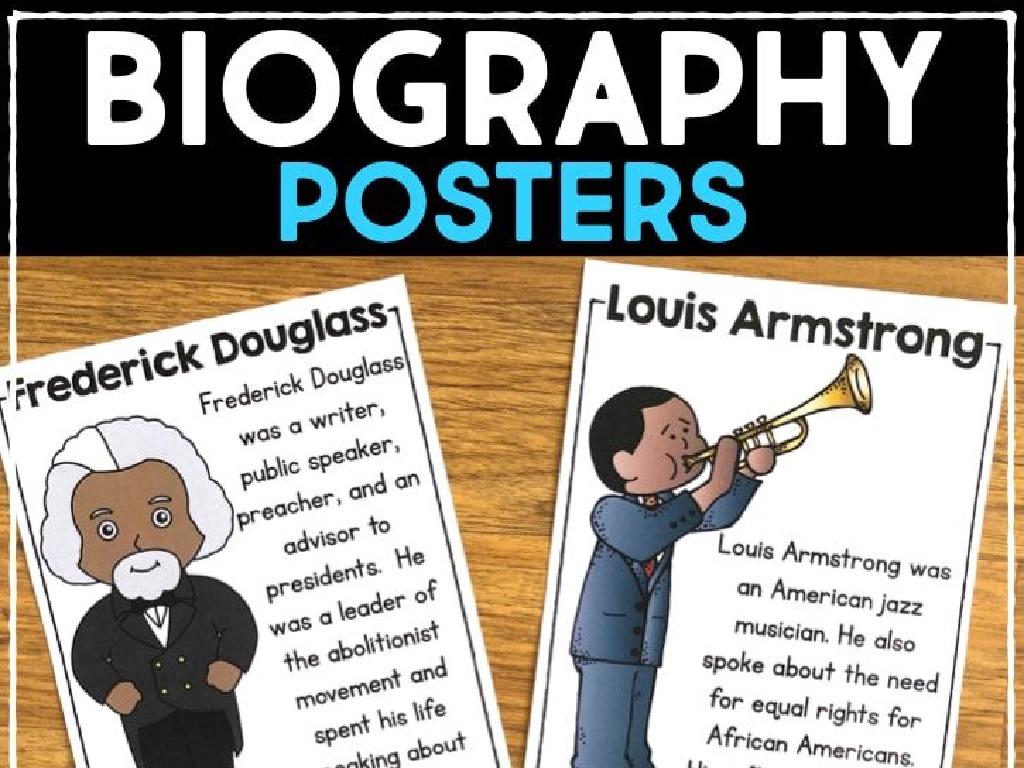The Statue Of Liberty
Subject: Social studies
Grade: Fifth grade
Topic: American Symbols, Landmarks, And Monuments
Please LOG IN to download the presentation. Access is available to registered users only.
View More Content
Exploring American Symbols: The Statue of Liberty
– American symbols and their roles
– Symbols like the Statue represent American ideals.
– Why national treasures matter
– They unite us and reflect our shared history.
– The Statue of Liberty’s significance
– A gift from France, symbolizing freedom and democracy.
– Engaging with Lady Liberty’s history
– We’ll learn about its creation, symbolism, and legacy.
|
This slide introduces the concept of American symbols, landmarks, and monuments, setting the stage for a deeper dive into one of the most iconic symbols of the United States: The Statue of Liberty. Begin by discussing the role of symbols in representing the values and history of a nation. Emphasize the importance of national treasures in uniting people and preserving collective memory. Highlight the Statue of Liberty as a key symbol of freedom and democracy, a gift from France that has welcomed millions to American shores. Encourage students to think about what Lady Liberty stands for and to be prepared to explore its history, construction, and the ideals it represents in American culture.
Exploring The Statue of Liberty
– A colossal neoclassical sculpture
– Stands on Liberty Island in New York Harbor, welcoming visitors
– Gifted by the people of France
– A token of friendship from France to the USA in 1886
– Symbolizes freedom and democracy
– Represents the ideals of liberty and democracy in the USA
– Located on Liberty Island, NY
|
The Statue of Liberty is not only an iconic American landmark but also a symbol of the enduring friendship between France and the United States. It stands as a representation of freedom and democracy, key values of the American ethos. The statue was dedicated on October 28, 1886, and has since been a beacon of hope for many, including immigrants arriving in America seeking a better life. When discussing the statue, emphasize its significance as a national monument and its role in American culture and history. Encourage students to think about what liberty means to them and how symbols like the Statue of Liberty help to unite people under shared values.
The History of The Statue of Liberty
– Designed by Bartholdi
– Frédéric Auguste Bartholdi, a French sculptor, created the statue.
– Dedicated on Oct 28, 1886
– The statue was officially completed and presented to the public on this date.
– France-U.S. friendship symbol
– It was a gift from France to the United States, representing their alliance.
– A beacon of freedom and hope
|
The Statue of Liberty has a rich history that is important for students to understand as part of their study of American symbols. Frédéric Auguste Bartholdi, the French sculptor who designed the statue, intended it to be a monumental gift that would symbolize the enduring friendship between France and the United States. The dedication date marks the moment when the statue was unveiled and became a symbol of hope and freedom for millions. It’s also a representation of the shared values of liberty and democracy between the two nations. The statue has since become an iconic symbol of the United States and a beacon of freedom for people around the world. Encourage students to think about what the statue represents to them and to people who see it for the first time.
Symbolism of The Statue of Liberty
– Torch: A Beacon of Enlightenment
– The torch lights the path to liberty and knowledge.
– Tablet: Signifying Law and Independence
– The tablet has JULY IV MDCCLXXVI inscribed, marking July 4, 1776.
– Broken Chains: Freedom from Oppression
– Chains represent the end of tyranny and slavery.
|
The Statue of Liberty is rich with symbols that represent key values of the United States. The torch is not just a source of light; it’s a symbol of enlightenment, guiding the way to freedom and knowledge. The tablet she holds is inscribed with the date of the American Declaration of Independence, signifying the law and the birth of the nation. At her feet, the broken chains are a powerful representation of America’s commitment to ending oppression and tyranny. When discussing these symbols with the class, emphasize how each element of the statue carries a deeper meaning related to the country’s history and ideals. Encourage students to think about other symbols they know and what they represent.
Facts About The Statue of Liberty
– ‘Liberty Enlightening the World’
– Stands over 305 feet tall
– From ground to flame tip
– Made of copper, was brown
– The brown color is from the original copper
– Turned green due to oxidation
– The green color is due to a natural process called oxidation
|
The Statue of Liberty, a symbol of freedom and democracy, has a full name that reflects its purpose: ‘Liberty Enlightening the World’. It’s an impressive structure, towering over 305 feet tall, which is about as tall as a 22-story building! The statue is made of copper, and when it was first built, it shone with the color of a penny. Over the years, the copper reacted with the air in a process called oxidation, which changed its color to the green patina we recognize today. This natural change is similar to how a penny turns green when left outside. When discussing these facts with students, emphasize the symbolism of the statue and how its physical changes can also reflect the evolving nature of liberty itself.
Visiting The Statue of Liberty
– Located on Liberty Island
– A small island in New York Harbor, home to the statue
– Accessible by ferry
– Boats take visitors to and from the island
– Pedestal or crown access
– Visitors can climb up for a panoramic view of NYC
– Part of National Monument
– Recognized as a symbol of freedom and democracy
|
The Statue of Liberty is situated on Liberty Island and is a symbol of freedom for the United States. Accessible by ferry, visitors can experience a unique view of New York City from the statue’s pedestal or crown. It’s important to note that the statue is part of the larger Statue of Liberty National Monument, which includes Ellis Island. This slide should emphasize the statue’s accessibility to the public and its significance as a national monument. Encourage students to think about what it would be like to visit and what views they might see from the pedestal or crown. Discuss the importance of the statue as an American symbol.
The Statue of Liberty Today
– UNESCO World Heritage Site
– Recognized for its cultural significance since 1984.
– Iconic tourist attraction
– Millions visit yearly to see Lady Liberty.
– Symbol of hope and freedom
– Represents liberty and democracy globally.
– Featured in popular culture
– Appears in films, books, and media.
|
The Statue of Liberty stands not only as a physical monument but also as an enduring symbol of freedom and democracy. Designated as a UNESCO World Heritage Site, it is recognized for its cultural and historical significance. As an iconic figure, it draws millions of tourists from around the world. The statue continues to embody the ideals of hope and freedom for many, serving as a beacon for those seeking liberty. Its image is prevalent in various forms of popular culture, further cementing its status as a national treasure. Encourage students to discuss what the Statue of Liberty represents to them and to explore its appearances in movies, books, and other media they may be familiar with.
Class Activity: Craft Your Mini Statue of Liberty
– Create a mini Statue of Liberty
– Use clay, paper, paint to build your statue
– Reflect on freedom and democracy
– What images or symbols represent these ideas to you?
– Share your statue with the class
– Present your creation to your classmates
– Discuss its significance
– Explain why you chose certain symbols or designs
|
This activity is designed to engage students with the concept of the Statue of Liberty as an American symbol of freedom and democracy. Provide a variety of materials for students to create their own miniatures. Encourage them to think creatively about what freedom and democracy mean to them personally, and how these ideas can be represented visually. As they share their creations, prompt them to explain the significance of their design choices. This will foster a deeper understanding of the symbolism behind the Statue of Liberty and allow students to express their interpretations of American values. Possible variations of the activity could include writing a short essay about their statue, creating a poster with images and words that represent freedom, or even composing a poem to accompany their artwork.





/gilded_age_illustrations.jpg)
